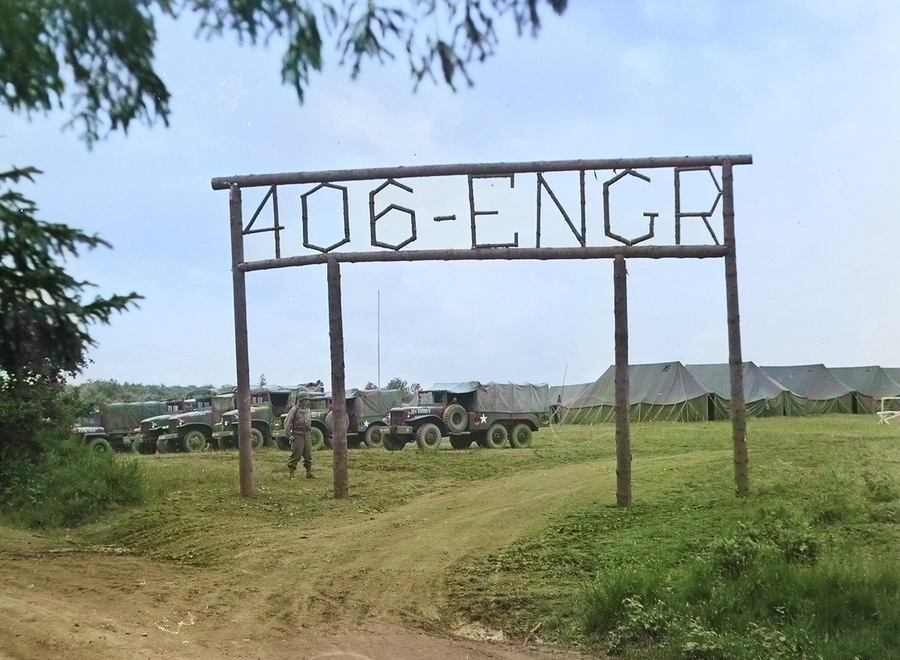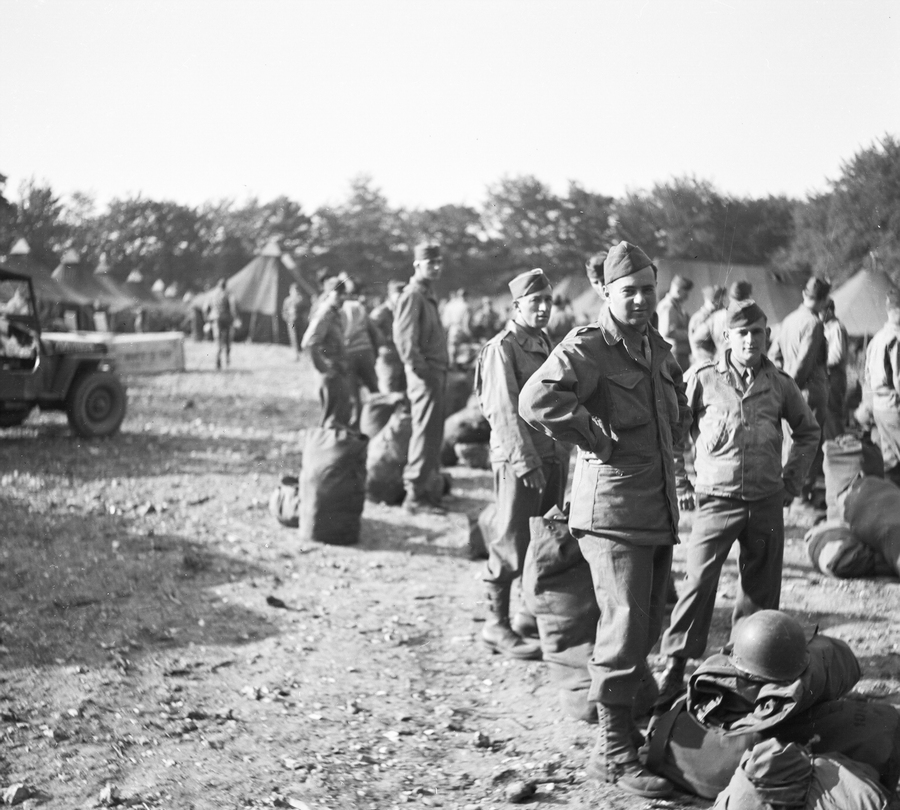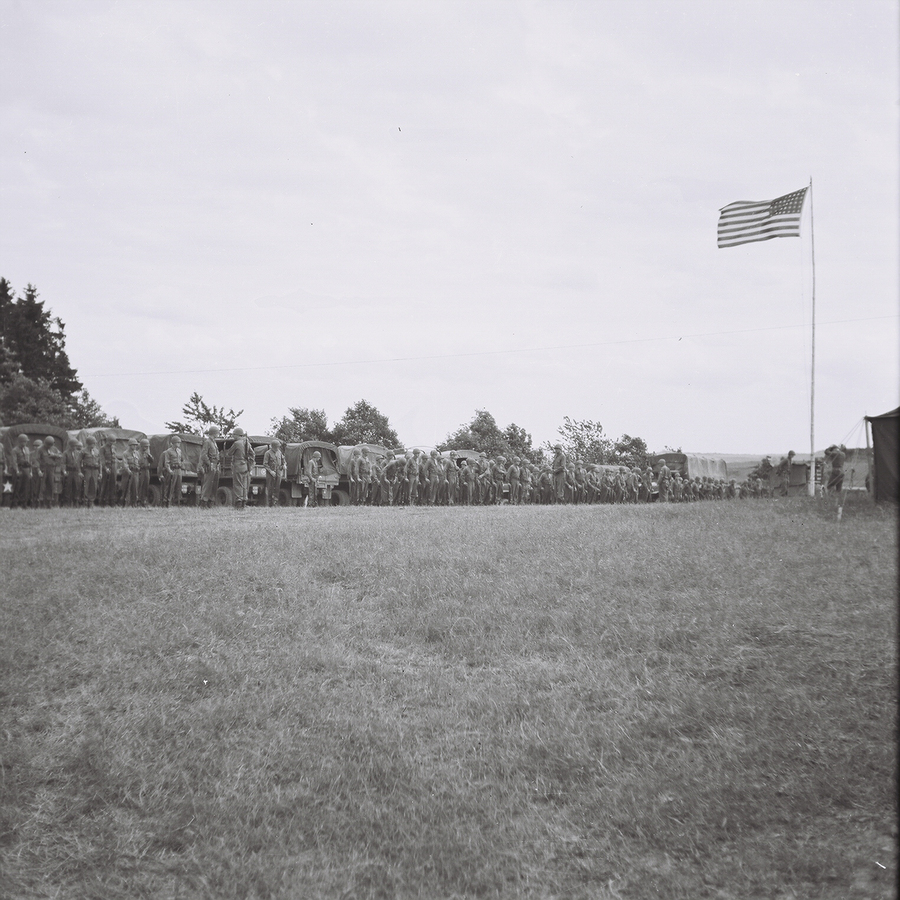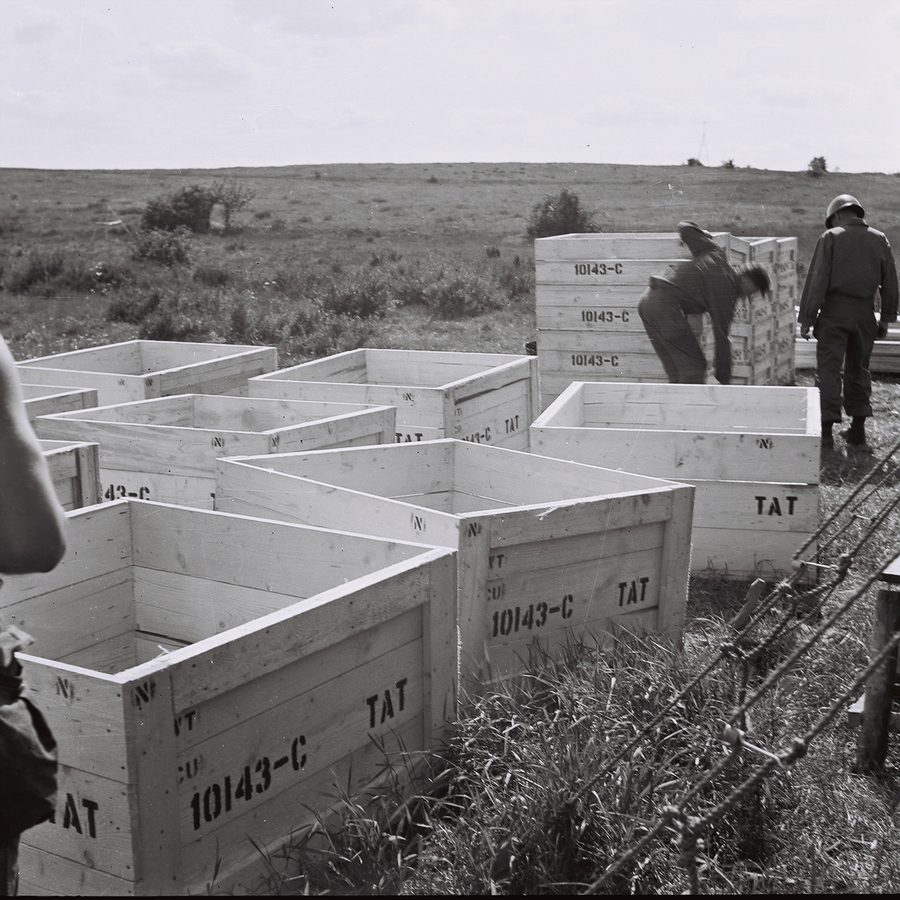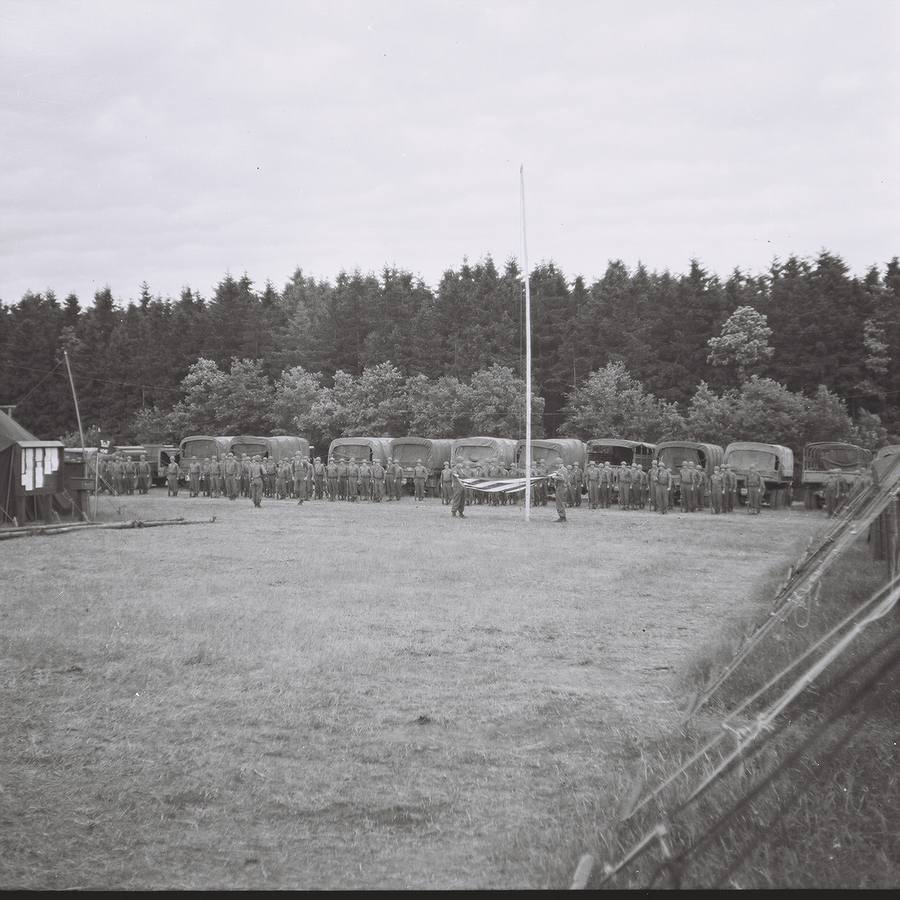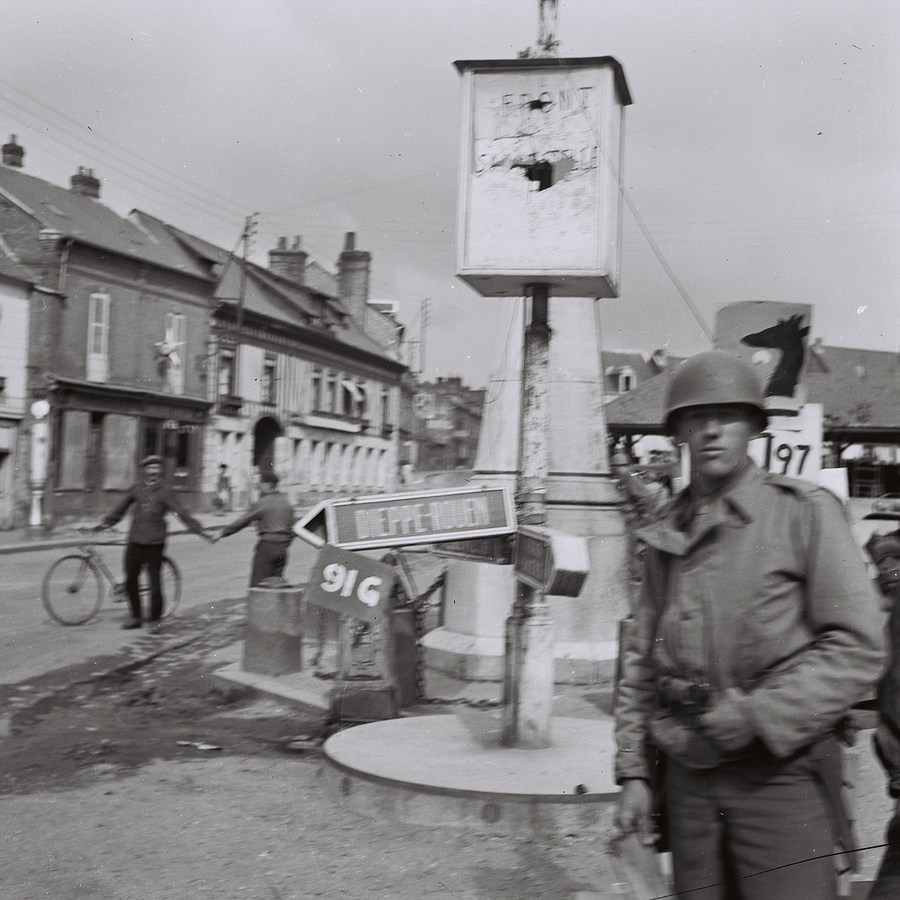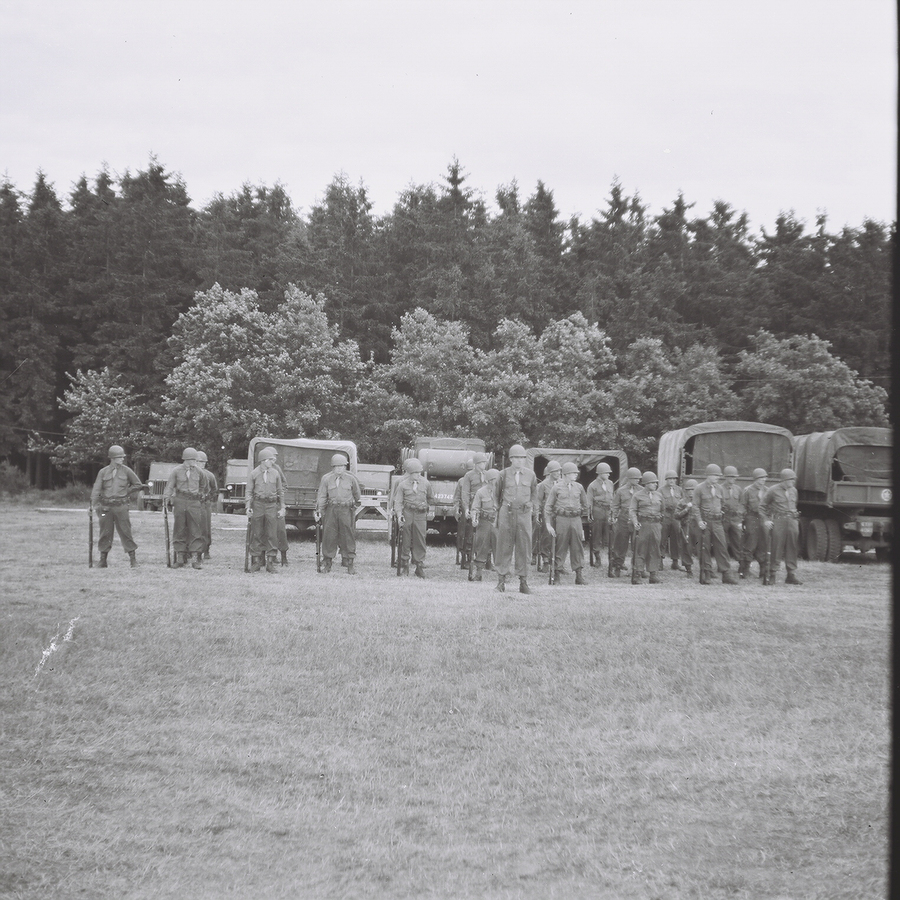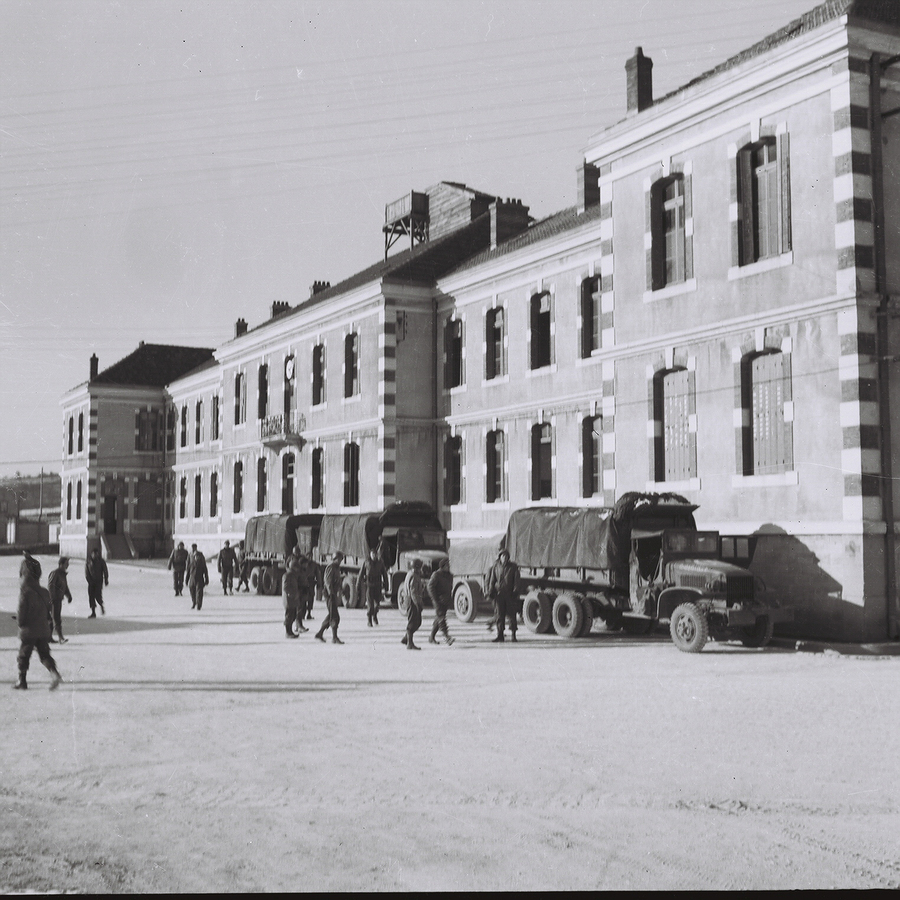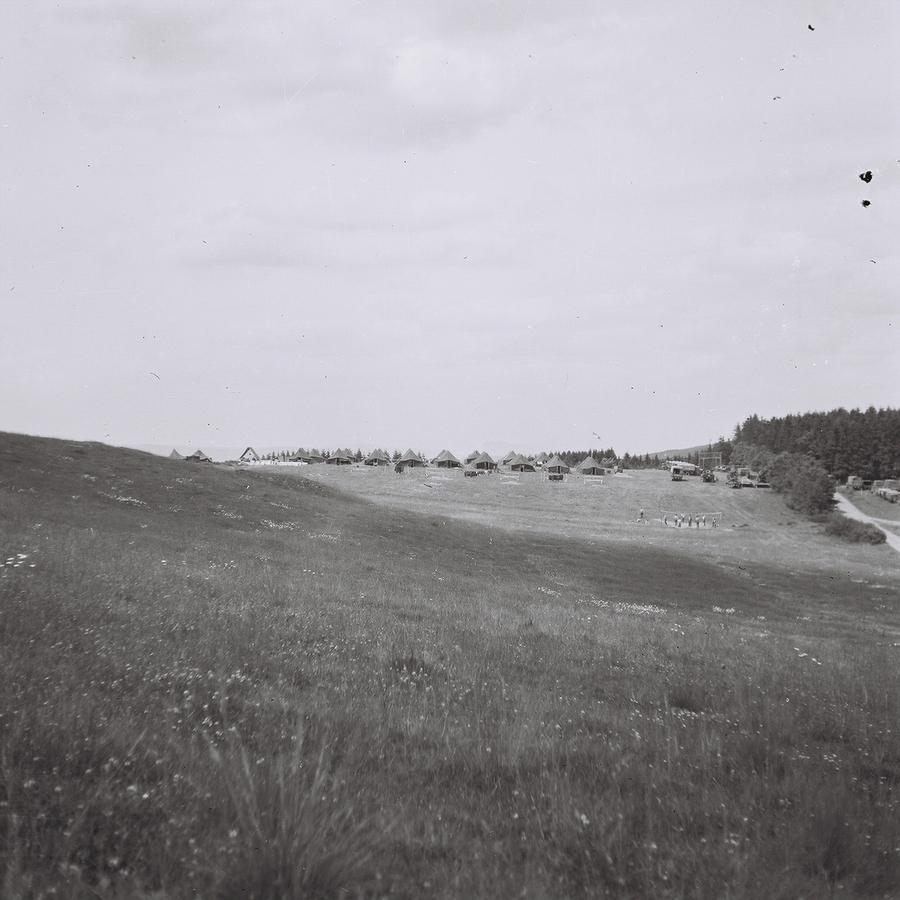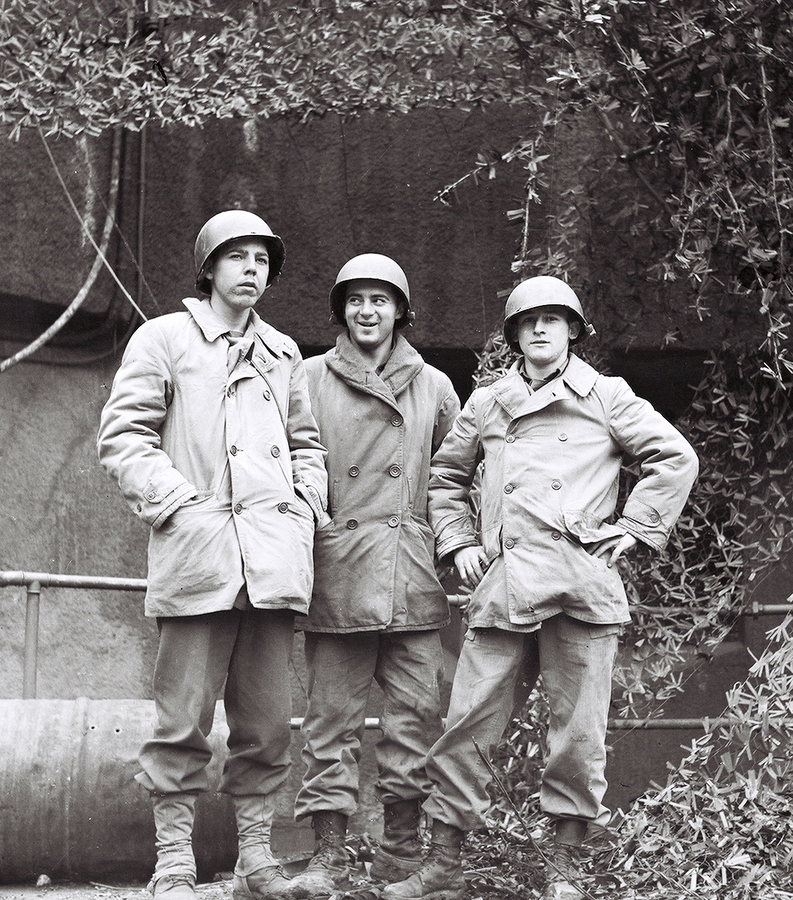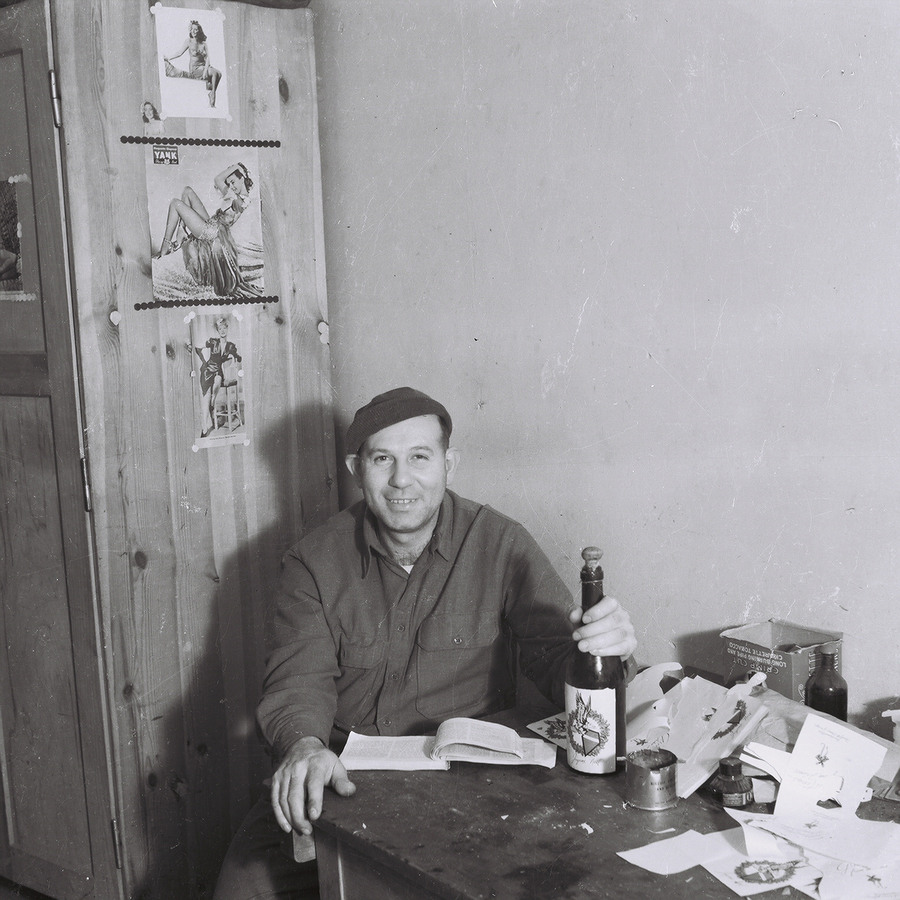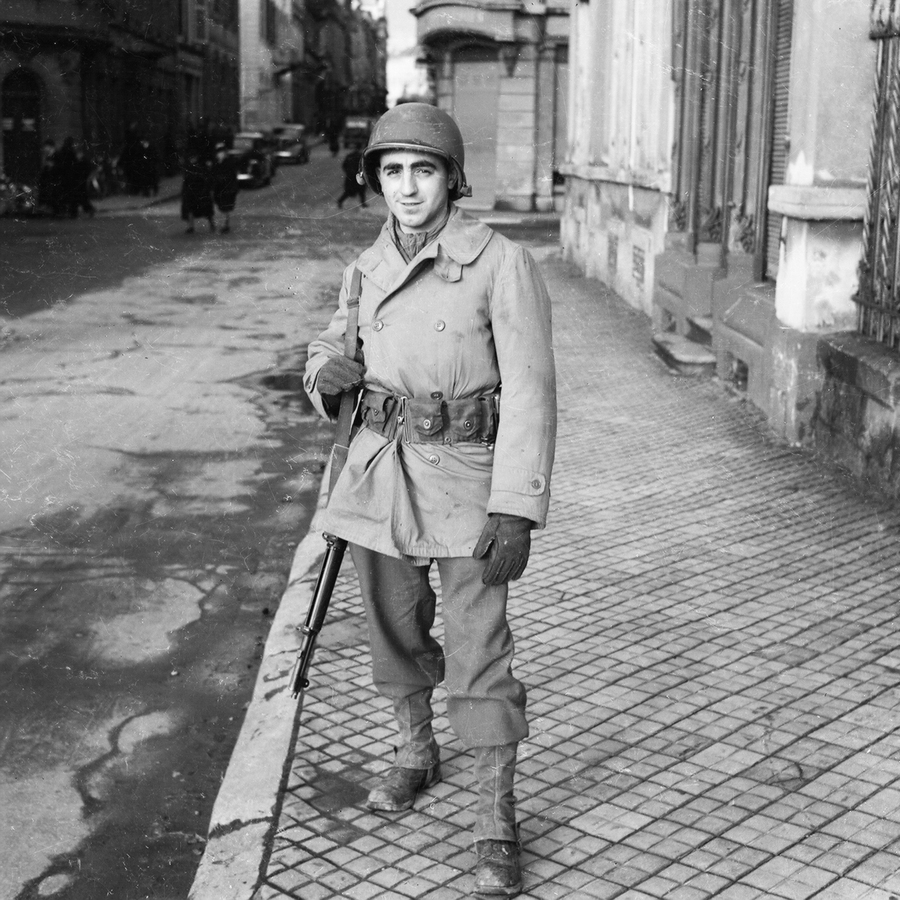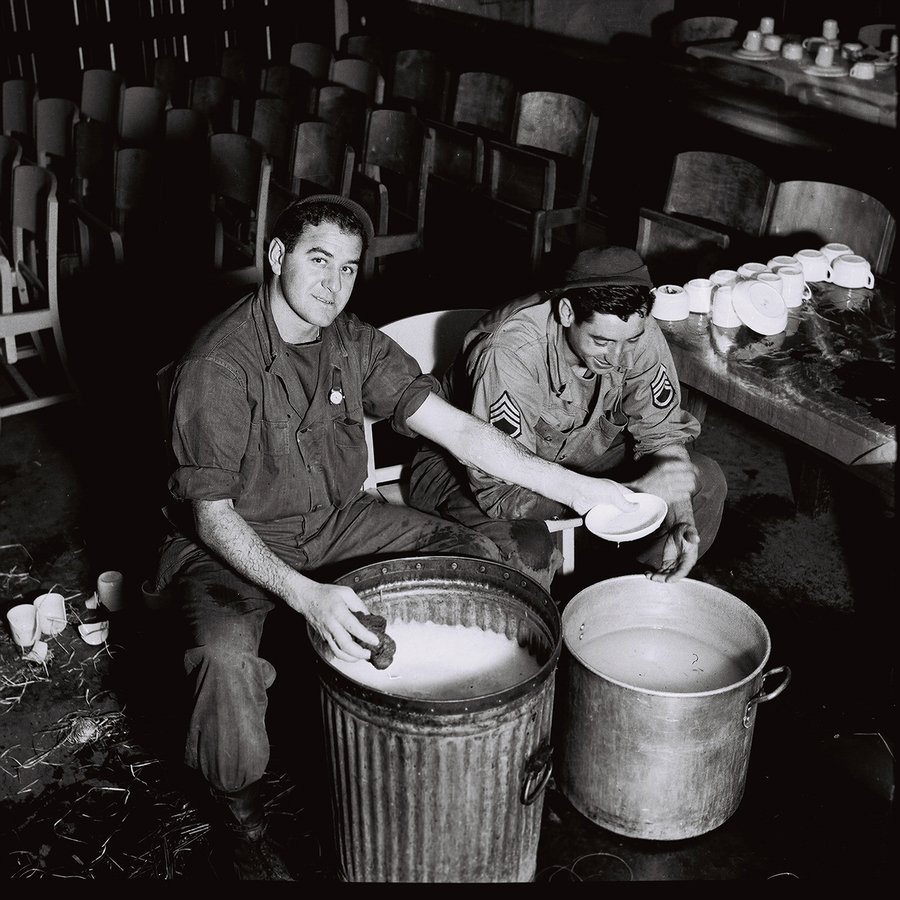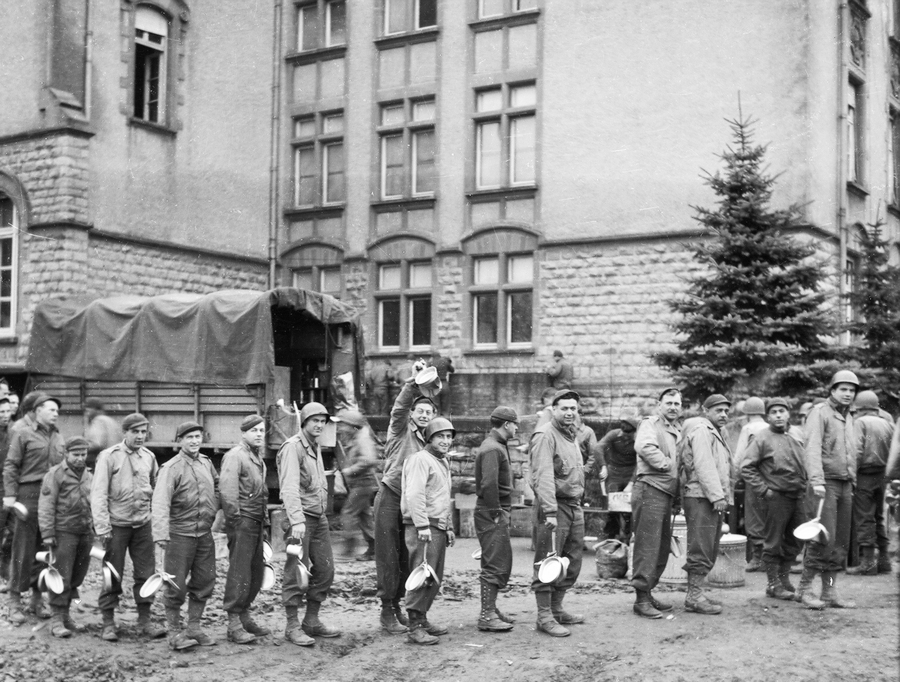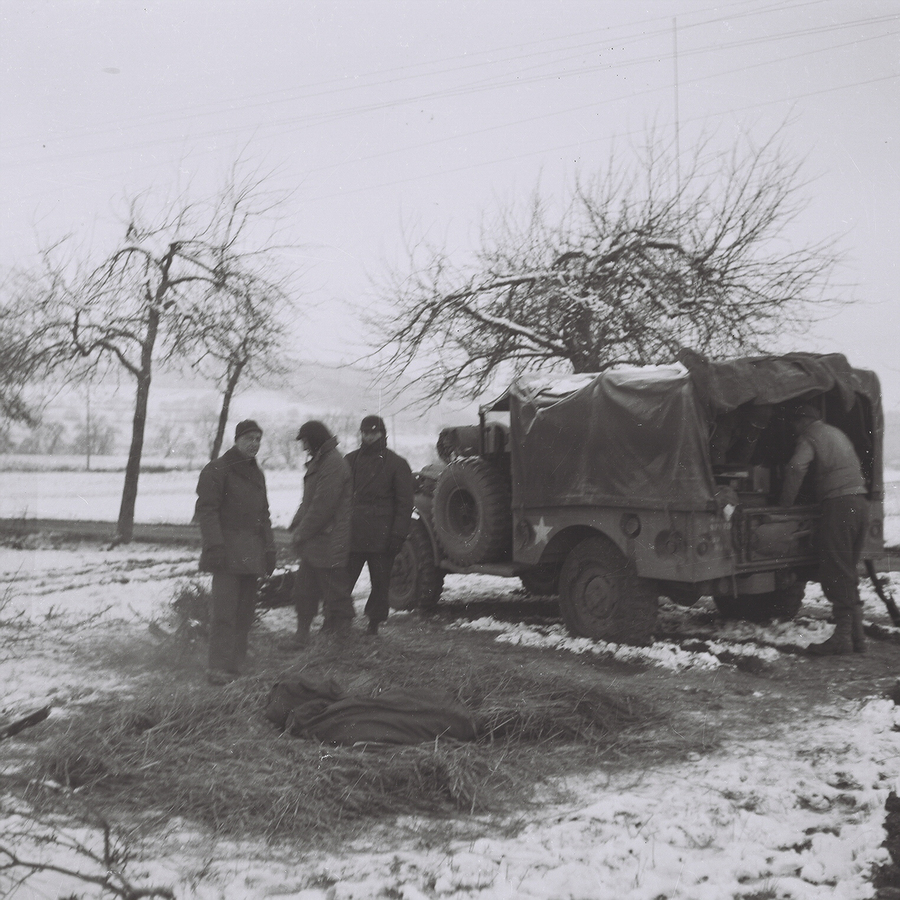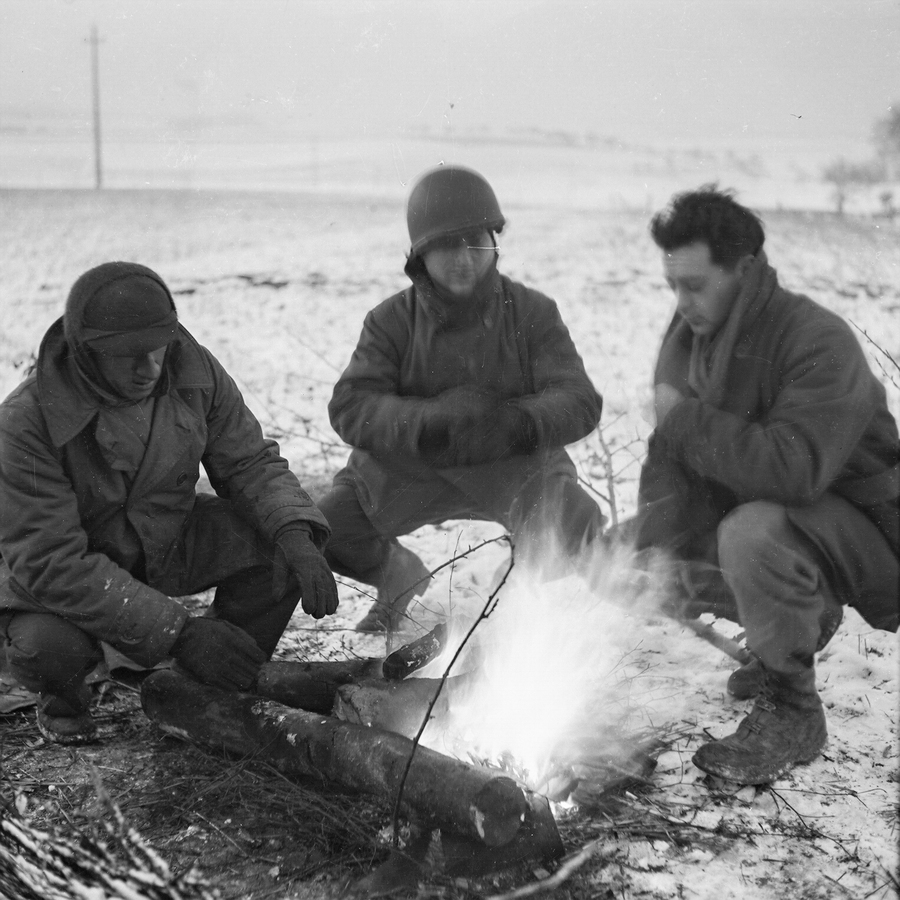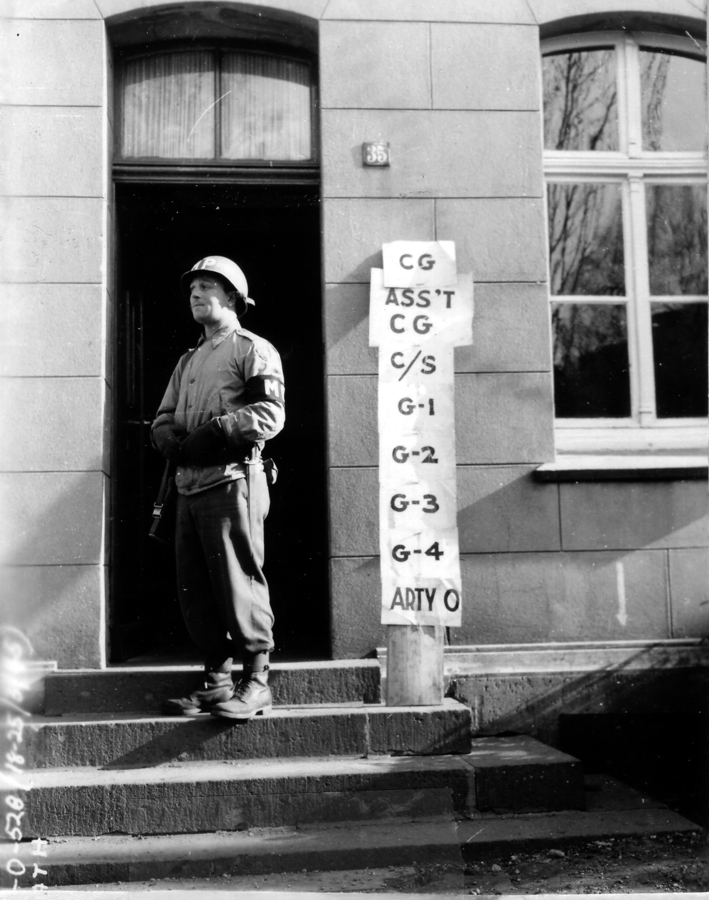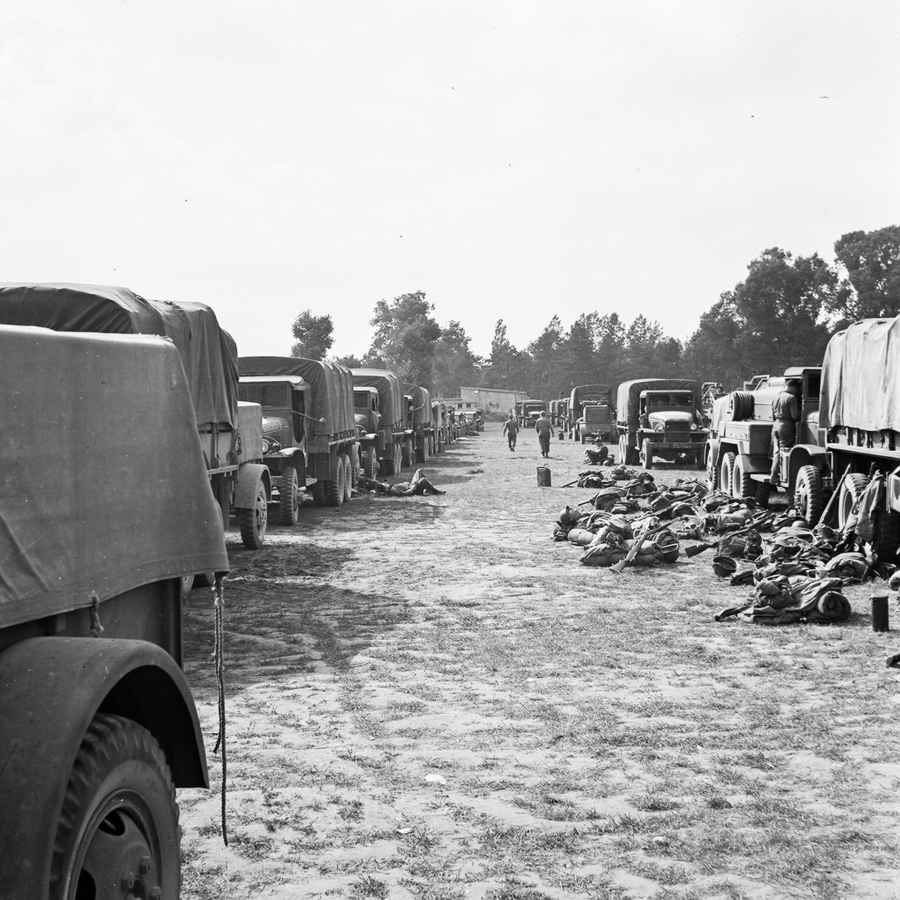History of the 406th
The History of Company A, 293rd Engineer, Battalion / 406th Engineer Combat Company Special
Back in 2011, General George Reb, who had served as commander of the 406th Combat Engineers during World War II, gave me two documents that together comprised a history of the 406th. I believe he gave them to me as PDF files, or else I scanned them and returned the originals – I can’t remember. The first half looks as if it is something that has been transcribed into a computer file. The second one is a simple scan of typewritten pages.
General Rebh did not recall who had written the document. I noticed the name “Campbell” affixed to the top of some pages, and disovered that there was a Rolf Campbell who served in the 406th. In 2013, General Rebh confirmed that Campbell was in charge of writing the 406th history. “But he incorporated input from other members of the company,” wrote General Rebh in an email.
In 2015 I reached out to Rolf Campbell’s daughter, Dr. Rita Blanchard. She was not aware of the 406th History, but mentioned that her father had written typed up and sent her several children’s stories during his time in the service. “The Bear Family Visit the City " and "Dr. Pillycan-the-Pelican". There was also "Wiggle Worm and Fuzzy Caterpillar" – so she was not completely surprised by the idea of his being the author of this.
The original history is without photos. We have added some photos of the 406th to help tell the story.
-Rick Beyer, November, 2023
read moreCivil to Servile
Yes, that was Fort Dix, New Jersey when, on March 25th, 1943, two battalions of rookies, inveigled into this situation by their friends and neighbors, boarded a train headed south, prepared for anything - except what the army had in store for them.
read moreCAMP PILOT KNOB APO 184 Los Angeles Calif.
Just inside the California border, some 16 miles from Yuma, this new base, Camp Pilot Knob, was merely a vast desolate expanse of sand and sage brush with the namesake mountain (Pilot Knob) rising dolefully in the background.
read moreCAMP FORREST, TENNESSEE
Social life in Tullahoma followed the pattern of most southern soldier towns. The USO’s attracted a few. Many had their wives in town for their last taste of stateside marital bliss. The majority either wolfed around town or enjoyed the camp’s varied facilities for relaxation.
read moreThe “Henry Gibbons”
At 00:30 hours, May 16, 1944, the disembarkation order came through and the men began shoving off the good ship “Henry Gibbons” on to the English docks in the midst of an air alert.
read moreWalton Hall
Walton Pall Manor, the former site of a Roman camp is situated between two fine estates: one Compton Verney, also occupied by the militia, and the other Charleot Park on the road to Stratford on Avon. Wellesbourn was a village only a mile from the manor.
read moreArrival in France
For the benefit of future generations, students of military arts, and biographers of famous persons, it is here recorded that Pfc. Nicholas Minutola was the first of the gallant 406 men to set root on liberated France.
read moreOperation Elephant
“Elephant” was the code name given to the battle bound group which consisted of Lt. Aliopoulos and his third platoon containing 48 enlisted men headed by S/Sgt. Wendle Tuttle, 14 officers, 1 W.0., and. 18 EMs came from 23d Hq.; the 603rd Eng. furnished 19 officers and 176 EMs while Signal Co. Sp. supplied 5 officers and 77 EMs. The medics sent along 1 officer and 7EMs. All the vehicles of the group had little white elephants stenciled on the bumpers.
read moreMine School
An aftermath of the company’s mine school was the window shattering performance conducted by 1st/Sgt. Toth.
read moreThe Admiral’s Estate
Unofficial poop had the company heading for a marshalling area or a port of embarkation. One hundred seventeen train miles put the train in Blandford and it was “ALL OUT!” Q. M. trucks taxied the march part to Cherborough Park or as the vernacular had it, “the Admiral’s Estate.”
read moreCornwellshire
The chow hounds remember the camp for the excellent food and for the medical captain who instructed Lt. Kelker about personalized washing of mess gears and the whereabouts of the end of the chow line. Mess attendants remarked that the company was the happiest bunch that had ever come through their chow line.
read moreMandeville
With the new home in order, the company settled down to a schedule conforming with the new situation. The program consisted of orientation, French lessons, hikes, C.O.D. and athletics.
read moreLa Fremonde
The training schedule started at Mandeville was continued at La Fremonde. One of the main points of interest in the morning hikes was a field filled with abandoned enemy equipment. Here, the souvenir hunters loaded themselves with loot which in most cases was junked after a month or so of lugging it in the old duffle bag.
read moreOperation Brittany
The objective of “Operation Brittany” was to stop withdrawal of German units in the Normandy pocket by creating an impression that the U. S. Army was weakening its forces in front of the main battle positions and turning to clear the Brittany peninsula prior to a major push in Normandy.
read moreTask Force “Peter”
Lt. Daly’s first platoon was assigned to Task Force “Peter” which was under the command of Lt. Col. Snee. Peter’s mission was to simulate a portion of the 2nd Armored Division in a march across the neck of the Brittany peninsula to join the attack on Lorient.
read moreTask Force “Nan”
At the briefing, the men were told that the mission of “Nan” was to simulate a march of one combat team of the 80th Infantry Division from an assembly position east of Laval toward Brest. Deception was to be accomplished by the use of special effects and radio.
read moreTask Force “Oboe”
In his briefing, Col. Schroeder told the men that Oboe’s mission was to portray one combat team of the 90th Division, with attached 155 artilllery, in a march toward Lorient. The enemy was to be deceived by the use of special effects and simulated radio traffic.
read moreTask Force “Mike”
A fourth task force was also employed in “Operation Brittany.” It was commanded by Lt. Col. Mayo and had as its mission the job of simulating the 35th Infantry Division in a march toward Brest.
read moreOperation Brest
The objective selected for 23rd Hq. was to bluff the Supermen into surrendering the city by showing an overwhelming force besieging it.
read moreTask Force “Y”
The mission of “Y” was to draw enemy fire away from the 37th F. A. Bn. (105 Howitzer direct support Bn.) by the use of flash devices in a dummy position.
read moreTask Force “Z”
The general plan for T. F. “Z” was to simulate the 69th Tank Battalion of the 6th Armored Division. To do this, Co. “A” 709th Tk. Bn. Was to be expanded by the use of three rubber dummy tank companies plus radio, sonic and special effects. The simulated Bn. would supposedly be in support of the 29th Infantry Regiment.
read moreOperation Bettembourg
On the 14th of September at 0900 news came to 23rd Hq. that an operation was being planned. From 12th Army Group at Versailles, it was learned that XX Corps, consisting of the 5th Infantry, 90th Infantry, and 7th Armored Divisions, operating in the vicinity of Metz, desired phantom armor. The outfit was alerted at 1210 while Colonel Reeder traveled 175 miles to the XX Corps C. P. Here it was learned that a simulated force of the 6th Armored Division Hq, CCA and CCR, was to be simulated at once, south of the city of Luxembourg.
read moreOperation Wiltz
The 5th Armored Division was the unit that was going to be represented. They had been located on the relatively inactive V Corps front, and were moving to the north to participate in an attack in that area. V Corps was being relieved in their sector by VIII Corps. The purpose of 23rd’s operation was to cover the 5th Armored’s move and fool the enemy into thinking that it was still in the same general position.
read moreOperation Elsenborn
The 4th Infantry Division was on the line in the V Corps area. It was to move to the north for an attack while the 9th Inf. Div. replaced it on the line. 23rd Hq. was to cover the move by simulating the division moving out of the line to a rest camp in the V Corps area.
read moreOperation Casanova
The 90th division was preparing a crossing of the Moselle River in strength, to the north of the area in which the 95th Infantry division was located. Included in the 95th Division’s plan (operation Casanova) for crossing the Moselle in their sector, was a cover scheme for the 90th.
read moreOperation Coblenz
With a heavy German concentration to the north of the VIII Corps front imminent, it was desired to draw additional German units to this sector, and prevent further withdrawal of enemy units until December 30. This was to be accomplished by indicating preparations for an attack toward Coblenz. The majority of the deceptive indications were to be transmitted to the enemy by actual units, the remainder by 23rd Hq Sp Trs.
read moreOperation Kodak
General Patton’s 80th Infantry Division and 4th Armored Division were committed to action in a counter attack against the south flank of the St. Vith-Bastogne salient. Operation Kodak sought to confuse the German radio intelligence as to the real location of these divisions by creating radio deception in an area southeast of their actual sectors.
read moreOperation Metz II
The objective of this operation was to cover the movement of the 90th Infantry Division from XX Corps sector to the III Corps sector. The problem was to commence January 6th, 1945 and last until the 90th was committed in the attack.
read moreOperation Flaxweiler
Objectively, this operation was to draw enemy attention to the Flaxweiler area. It was thus planned to divert the enemy from an attack by XII Corps. This offensive was to come from the north in the vicinity of Dickinson.
read moreOperation Landonvillers
The covering of the movement of the 95th Infantry Division from XX Corps to VIII Corps Zone was the objective of this operation. The division was scheduled to move January 28th-29th.
read moreOperation Whipsaw
The mission this time was to simulate, the first night, three tank battalions moving into two different locations on the Moselle River. The second night the job was to portray the three battalions making adjustments and establishing outposts in the same location. The objective this time was to threaten the front, Grevenmacher to Saarlautern.
read moreOperation Merzig
At any rate, barely a week after Whipsaw, Lt. Robinson and his men were once more headed for the gay outdoor spaces, this time to aid the 3rd Cavalry Group.
read moreOperation Bouzonville
XX Corps was preparing an attack to pocket the German forces in the area bounded by the Saar, Moselle, and Rhine rivers, the main effort to be between Trier and Saarburg. Staff officers of 23rd Hq were consulted for advice on deceptive measures to conceal the location of this drive.
read moreOperation Exploit (Viersen)
With the Germans on the jump in all sectors, the scene was set for a Blarney coup – a master stroke of deception capable of saving thousands of lives, and setting the stage for the final capitulation of the German military machine.
read moreCommendation Letter
I desire to commend the officers and men of the 23rd Headquarters Special Troops, Twelfth Army Group, for their fine work and to express my appreciation for a job well done.
read moreDP Camp
Thus it came as somewhat of a shock to hear that Col. Reeder had volunteered the services of his command to Gen. Patton in whatever way he saw fit. What did Patton want the 406 Engr C Co to do for him? All he wanted from the 406th (and 603rd as well) was to have them feed and care for some Russian and Polish Displaced Persons (hereinafter known as DP’s) who were causing quite a problem for the military government.
read morePine Camp
The company reopened its books on August 9th as the men began to trick in from their separation centers. It took several days before things began to get back to what could be considered the norm, but it was obvious from the start that the unit was going to enjoy its best “deal” since its inception.
read more